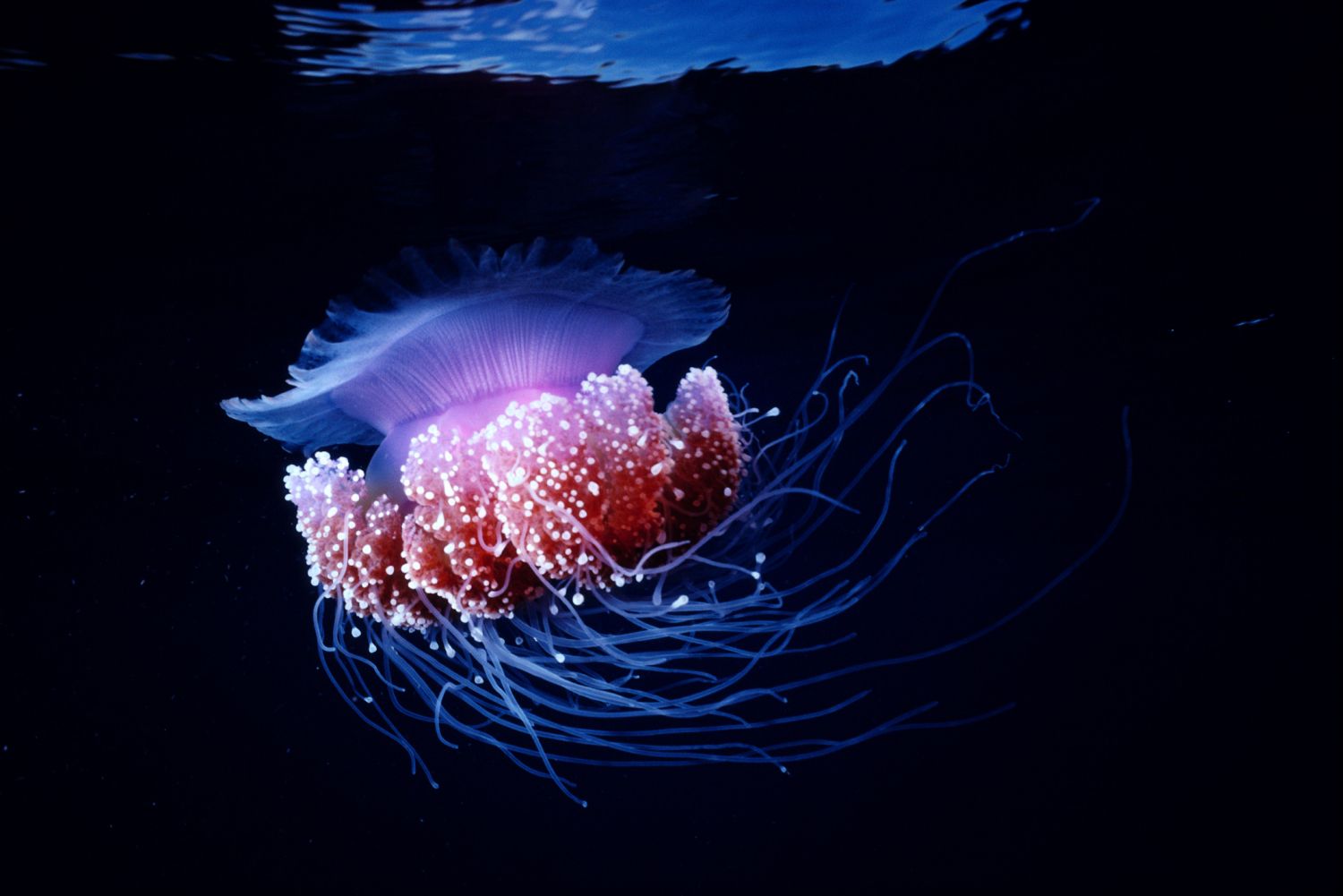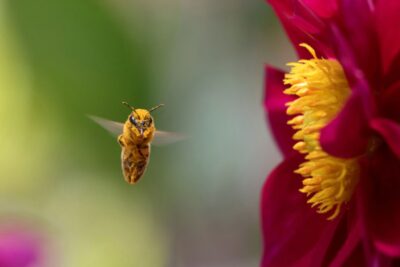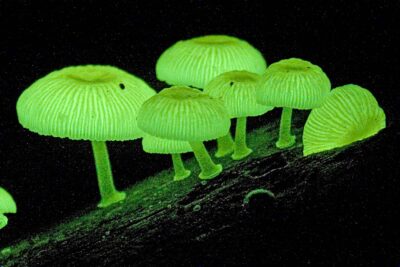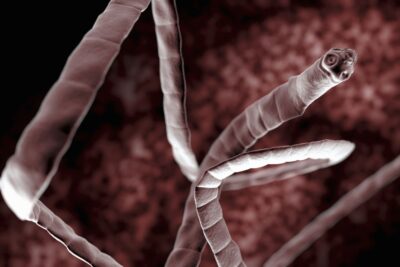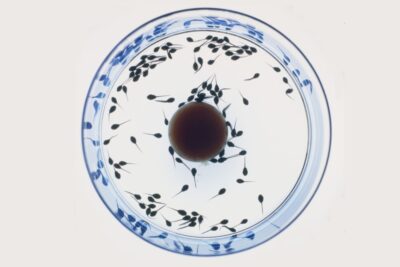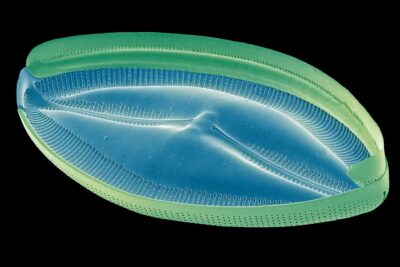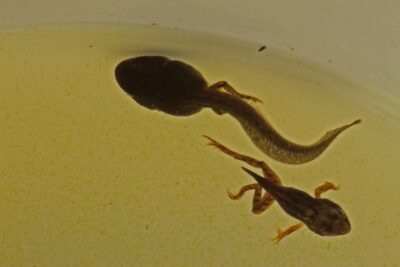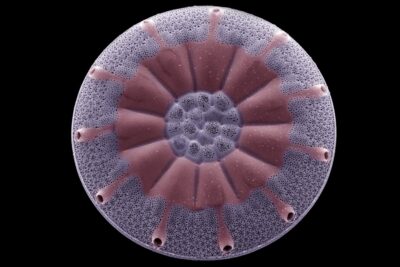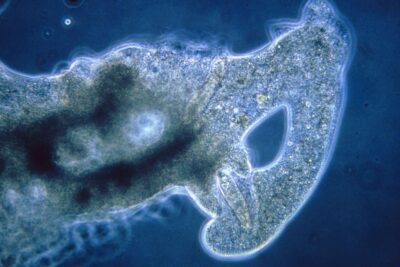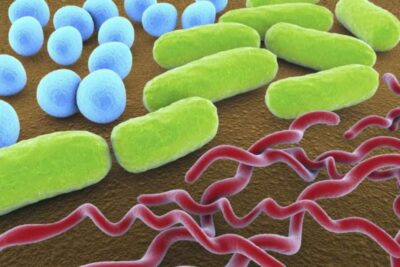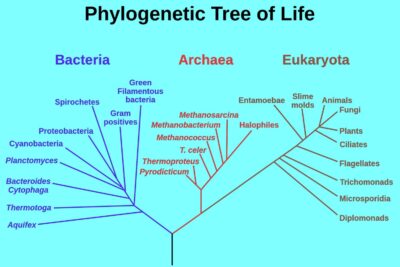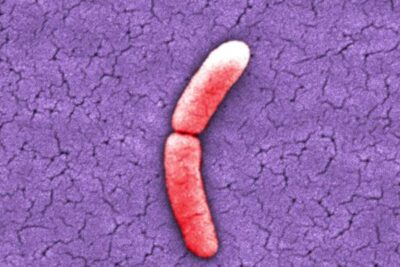
Bioluminescence is the natural emission of light by living organisms. This light is produced as a result of a chemical reaction that takes place in the cells of bioluminescent organisms. In most instances, reactions involving the pigment luciferin, the enzyme luciferase, and oxygen are responsible for the emission of light. Some organisms have specialized glands or organs called photophores that produce light. Photophores house light-generating chemicals or sometimes bacteria that emit light. A number of organisms are capable of bioluminescence including some types of fungi, marine animals, some insects, and a few bacteria.
Why Glow in the Dark?
There are a variety of uses for bioluminescence in nature. Some organisms use it as a defense mechanism to surprise or distract predators. The emission of light also serves as a means of camouflage for some animals and as a means to make potential predators more visible. Other organisms use bioluminescence to attract mates, to lure potential prey, or as a means of communication.
Lectura relacionada: RFLP y las Aplicaciones de Análisis de ADN
RFLP y las Aplicaciones de Análisis de ADN
Bioluminescent Organisms
Bioluminescence is observed among a number of marine organisms. This includes jellyfish, crustaceans, algae, fish, and bacteria. The color of the light emitted by marine organism is most commonly blue or green and in some cases red. Among land dwelling animals, bioluminescence occurs in invertebrates such as insects (fireflies, glow worms, millipedes), insect larvae, worms, and spiders. Below are examples of organisms, terrestrial and marine, that are bioluminescent.
Lectura relacionada:
 Learn About Plant Cell Types and Organelles
Learn About Plant Cell Types and OrganellesJellyfish
Jellyfish.
Yoshikazu Nagayama/EyeEm/Getty Images
Jellyfish are invertebrates that consist of a jelly-like material. They are found in both marine and freshwater habitats. Jellyfish typically feed on dinoflagellates and other microscopic algae, fish eggs, and even other jellyfish.
Jellyfish have the ability to emit blue or green light. A number of different species use bioluminescence primarily for defense purposes. The light emission is typically activated by touch, which serves to startle predators. The light also makes predators more visible and may attract other organisms that prey on jellyfish predators. Comb jellies have been known to secrete luminescent ink that serves to distract predators providing time for the comb jelly to escape. Additionally, bioluminescence is used by jellyfish to warn other organisms that a particular area is occupied.
Lectura relacionada:
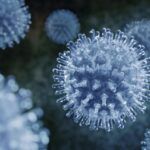 7 Datos Sobre Los Virus
7 Datos Sobre Los VirusDragonfish
This scaleless black dragonfish (Melanostomias biseriatus) has a bioluminescent lure and razor sharp teeth.
Solvin Zankl/Photographer's Choice/Getty Images
Black dragonfish are monstrous-looking, scaleless fish with very sharp, fang-like teeth. They are typically found in deep sea aquatic habitats. These fish have specialized organs known as photophores that produce light. Tiny photophores are located along its body and larger photophores are found below its eyes and in a structure that hangs below its jaw known as barbel. Dragonfish use the glowing barbel to lure fish and other prey. In addition to the production of blue-green light, dragonfish are also capable of emitting red light. Red light helps the dragon fish locate prey in the dark.
Dinoflagellates
This image shows bioluminescent algae (Noctiluca scintillans), a type of marine dinoflagellate, on the Matsu Island coast.
Wan Ru Chen/Moment/Getty Images
Dinoflagellates are a type of unicellular algae known as fire algae. They are found in both marine and freshwater environments. Some dinoflagellates are capable of bioluminescence due to the production of chemical compounds that produce light when they react. Bioluminescence is triggered by contact with other organisms, objects, or by the movement of the surface of waves. Drops in temperature may also cause some dinoflagellates to glow. Dinoflagellates use bioluminescence to ward off would be predators. When these organisms light up, they give the water a beautiful blue, glowing hue.
Anglerfish
This deep sea anglerfish (Diceratias pileatus) uses a bioluminescent lure to attract prey.
Doug Perrine/Photolibrary/Getty Images
Anglerfish are strange looking deep sea fish with sharp teeth. Protruding from the dorsal spine of the females is a bulb of flesh that contains photophores (light-producing glands or organs). This appendage resembles a fishing pole and lure that hangs above the animal's mouth. The luminescent bulb lights up and attracts prey in the dark aquatic environment to the large open mouth of the anglerfish. The lure also serves as a means to attract male anglerfish. Bioluminescence seen in anglerfish is due to the presence of bioluminescent bacteria. These bacteria reside in the glowing bulb and produce the necessary chemicals to emit light. In this mutualistic symbiotic relationship, the bacteria receive protection and a place to live and grow. The anglerfish benefits from the relationship by gaining a means of attracting food.
Firefly
Firefly is a common name for a bioluminescent beetle in the Lampyridae family.
Steven Puetzer/Photographer's Choice/Getty Images
Fireflies are winged beetles with light producing organs located in their abdomen. Light is created by the reaction of the chemical luciferin with oxygen, calcium, ATP, and the bioluminescent enzyme luciferase within the light organ. Bioluminescence in fireflies serves several purposes. In adults, it is primarily a means to attract mates and to lure prey. The flashing light patterns are used to identify members of the same species and to distinguish male fireflies from female fireflies. In firefly larvae, the glowing light serves as a warning to predators not to eat them because they contain distasteful toxic chemicals. Some fireflies are capable of synchronizing their light emission in a phenomenon known as simultaneous bioluminescence.
Glow Worm
Glow worms are not worms but insects with light producing organs along their thoracic and abdominal areas.
Joerg Hauke/Picture Press/Getty Images
A glow worm is not actually a worm at all but the larvae of various groups of insects or adult females that resemble larvae. Adult female glow worms do not have wings, but have light producing organs along their thoracic and abdominal areas. Like fireflies, glow worms use chemical bioluminescence to attract mates and lure prey. Glow worms produce and hang suspended from long silky fibers that are covered in a sticky substance. They emit light to attract prey, such as bugs, that become entrapped in the sticky fibers. Glow worm larvae emit light to warn predators that they are toxic and would not make a good meal.
Fungi
Mycena lampadis is one of several species of bioluminescent fungi.
Credit: Lance@ ancelpics/Moment/Getty Images
Bioluminescent fungi emit a green glowing light. It has been estimated that there are over 70 species of fungi that are bioluminescent. Scientists believe that fungi, such as mushrooms, glow in order to attract insects. Insects are drawn to the mushrooms and crawl around on them, picking up spores. The spores are spread as the insect leaves the mushroom and travels to other locations. Bioluminescence in fungi is controlled by a circadian clock that is regulated by temperature. As the temperature drops when the sun sets, the fungi begin to glow and are easily visible to insects in the dark.
Squid
Bbioluminescence is common in several species of squid such as this bigfin reef squid.
Sha/Moment Open/Getty Images
There are a number of species of bioluminescent squid that make their home in the deep sea. These cephalopods contain light producing photophores over large portions of their bodies. This enables the squid to emit a blue or green light along the length of its body. Other species use symbiotic bacteria to produce light.
Squid use bioluminescence to attract prey as they migrate to the surface of the waters undercover of night. Bioluminescence is also used as a type of defense mechanism known as counter-illumination. Squids emit light to camouflage themselves from predators that typically hunt by using light variations to detect prey. Due to bioluminescence, the squid don't cast a shadow in the moonlight making it difficult for predators to detect them.
Octopus
This bioluminescent pelagic octopus is in the Red Sea at night.
Jeff Rotman/Photolibrary/Getty Images
While common in other cephalopods such as squid, bioluminescence does not typically occur in octopuses. The bioluminescent octopus is a deep sea creature with light-producing organs called photophores on its tentacles. The light is emitted from organs that resemble suckers. The blue-green light serves to attract prey and potential mates. The light is also a defense mechanism used to startle predators providing time for the octopus to escape.
Sea Salp
Sea salps (Pegea confoederata), also called pelagic tunicates, are gelatinous animals that are capable of bioluminescnce.
Dave Fleetham/Perspectives/Getty Images
Salps are marine animals that resemble jellyfish, but they are actually chordates or animals with a dorsal nerve chord. Shaped like a barrel, these tiny free-swimming animals drift in the ocean individually or form colonies that stretch several feet in length. Salps are filter feeders that feed primarily on phytoplankton, such as diatoms and dinoflagellates. They play an important role in marine ecosystems by controlling phytoplankton blooms. Some salp species are bioluminescent and use light to communicate between individuals when linked in vast chains. Individual salps also use bioluminescence to attract prey and potential mates.

